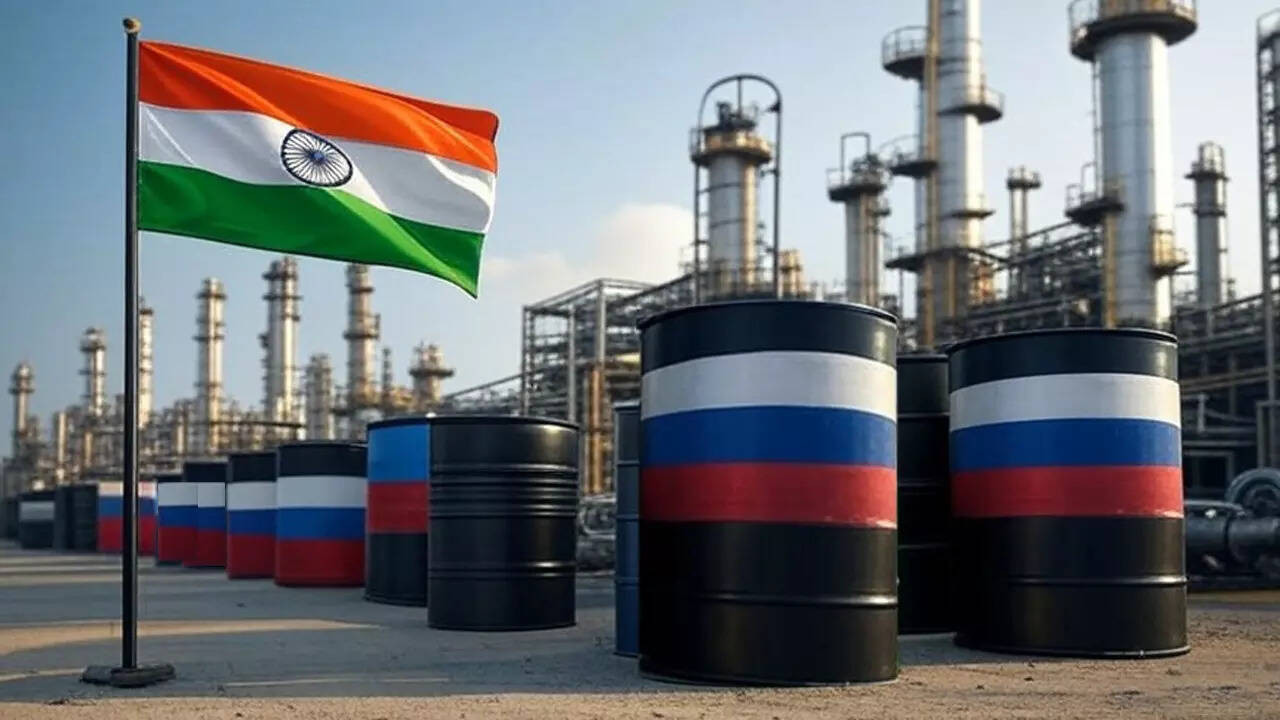India’s Shifting Sands: Why Some Refineries Are Cooling on Russian Crude
The global oil market is a turbulent sea, and India, a major consumer, is navigating those choppy waters with increasing dexterity. But beneath the surface of record imports and overall stability, a fascinating divergence is emerging: state-owned refineries are scaling back their reliance on Russian crude, while private players are eagerly snapping up the supply. What’s driving this nuanced shift in India’s oil market? Let’s dive in.
For months, Russia was the undisputed king of Indian crude imports, offering significant discounts as Western sanctions tightened. Indian refineries, both public and private, took full advantage, fueling economic growth and keeping prices competitive. But now, the tide seems to be turning.
The primary reason boils down to economics and geopolitical pressure, which are intertwined. While the initial discounts on Russian crude were irresistible, those price advantages have gradually eroded. As Russia has adapted to sanctions, the cost savings have narrowed, making other sources more attractive.
The state-owned behemoths, like Indian Oil Corporation (IOC), Bharat Petroleum Corporation (BPCL), and Hindustan Petroleum Corporation (HPCL), face greater scrutiny from both the government and international partners. These entities are acutely aware of the reputational risks associated with over-reliance on Russian oil, even if it remains technically legal. They also have a broader mandate, which includes safeguarding India’s long-term energy security and diversifying supply chains. As a result, they’re starting to look westward again, exploring alternative sources from the Middle East, Africa, and even the United States.
Private refineries, on the other hand, operate with a different calculus. For companies like Reliance Industries and Nayara Energy, profitability is the name of the game. They are less constrained by political considerations and can move swiftly to seize opportunities in the oil market. As long as Russian crude remains competitively priced, they are likely to continue importing it, maximizing their margins and contributing to India’s overall refining capacity. This pursuit of profit is a key driver of the complex dynamic within India’s oil sector.
This doesn’t mean state-owned refiners are abandoning Russian oil entirely. It simply signifies a rebalancing. They are strategically diversifying their sources to hedge against future price fluctuations and potential disruptions. They are also considering factors beyond immediate cost savings, such as the long-term stability of supply and the geopolitical implications.

Furthermore, logistical challenges are also playing a role. Transporting Russian crude to India involves longer shipping routes and complex insurance arrangements, adding to the overall cost. As other sources become more readily available and competitively priced, the logistical burdens associated with Russian oil become a more significant deterrent.
The impact of this shift extends beyond the refineries themselves. It affects global oil prices, shipping rates, and even geopolitical alliances. India’s decisions ripple through the entire energy ecosystem. The long-term implications are still unfolding, but it’s clear that India is becoming a more sophisticated and strategic player in the global oil market.
This rebalancing act also underscores the importance of energy independence. India is constantly striving to reduce its reliance on any single source of energy, whether it’s oil, gas, or renewable energy. Diversifying supply chains is crucial for ensuring energy security and mitigating the risks associated with geopolitical instability. This pursuit of energy independence influences how India’s state-owned enterprises participate in the global oil market.
As India’s economy continues to grow, its energy needs will only increase. How the nation navigates this complex landscape—balancing economic imperatives with geopolitical realities and the crucial goal of energy security—will have far-reaching consequences for both India and the world. Considering the importance of energy diversification, reviewing current renewable energy initiatives in India could offer further insight into the nation’s energy strategy.
In conclusion, the shifting dynamics within India’s oil market, with state-owned refiners pulling back slightly from Russian crude while private firms maintain their intake, reflects a complex interplay of economic factors, geopolitical considerations, and logistical realities. It highlights India’s growing sophistication as a global energy player and its unwavering commitment to securing its energy future through diversification and strategic partnerships.







